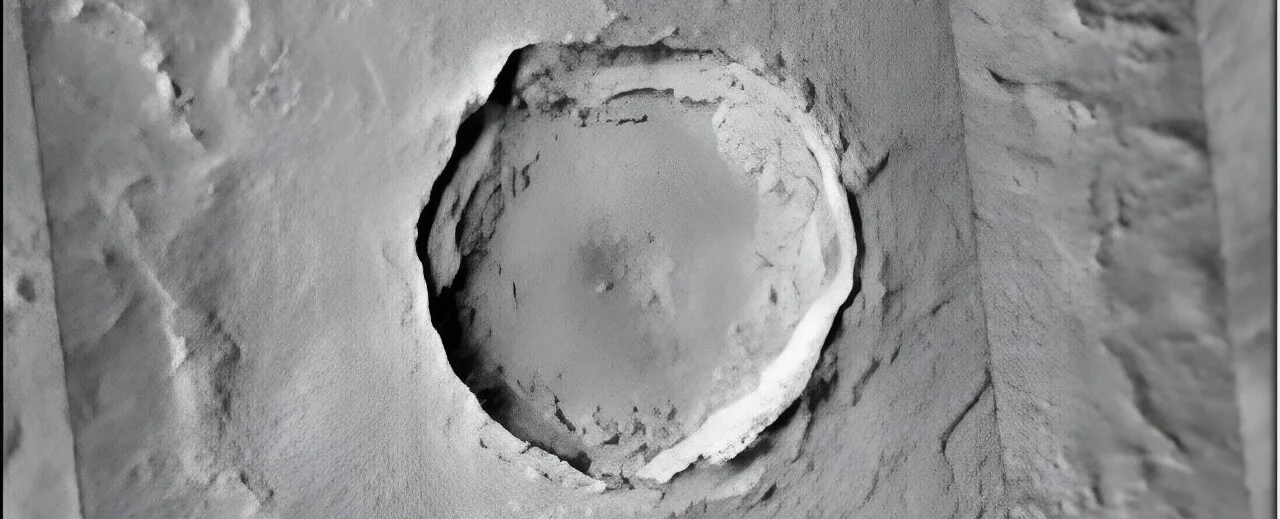Mysterious collision left 2 billion craters on Mars surface
- March 24, 2024
- 0
Mars has a lot of craters, especially compared to Earth. This is mainly due to the absence of weathering forces and strong plate tectonics that disrupt the occurrence
Mars has a lot of craters, especially compared to Earth. This is mainly due to the absence of weathering forces and strong plate tectonics that disrupt the occurrence

Mars has a lot of craters, especially compared to Earth. This is mainly due to the absence of weathering forces and strong plate tectonics that disrupt the occurrence of such effects on our own planet. However, not all impact craters on Mars are caused directly by asteroid impacts. Most of these are due to the ejection of an asteroid that crashed back into the planet. A recent study shows how effective this can be; He concludes that a large impact crater on Mars created more than two billion other smaller craters about 2000 km away.
The study, presented at the 55th Annual Lunar and Planetary Science Conference in Texas, focused on a crater called Corinto. It is located on the planet Elysium, just 17 degrees north of the Red Planet’s equator.
It is a relatively young crater by Martian standards, and scientists’ best estimate of its age is around 2.34 million years. Even though it is so young and quite large, the average time between collisions is about 3 million years. Therefore, scientists believe that this may be the newest crater of this size on Mars.
But that’s not why it’s interesting. It has a branched “radial system”. This means that a significant amount of ejecta was ejected from the impact site and fell elsewhere on the planet, creating “rays” from the central impact point that can even be seen on a map of the planet’s surface today.
Corinto crater is approximately 14 km in diameter and 1 km deep. The impact left its inner bowl dotted with other small craters. The superheated ice released gas after impact, indicating that it was filled with water ice at the time of impact. Calculations show a relatively steep impact angle of about 30-45 degrees from a straight line, and the impactor appears to have come from the north.
As a result, most of the impact area with the launch is located south of the crater, especially in its southwest. Although some of the secondary ejection craters are located north of the main crater, it seems clear that the angle of impact was significant enough to push most of the eruption to the south.
Tracing the path of this emission after a few million years is not easy. Scientists used data collected by HiRISE and the Content Camera (CTX) on the Mars Reconnaissance Orbiter (MRO) to analyze the properties of smaller craters surrounding the main Corinthian crater. Specifically, they looked for craters that appeared to have been formed by an ejection rather than an interplanetary impactor.

They grouped the different types of ejection craters they found into five different “facies,” focusing mainly on how far they were from the main crater. Each facies has its own characteristics. For example, facies 0, closest to the main crater, is semicircular in shape, has no eruptions, or has very sharp edges. Facies 3 craters, on the other hand, are long and narrow rather than semicircular (indicating that something rolled to form them) and appear very bright in MRO images.
The two main takeaways from the article will probably catch most people’s attention. Scientists found that there are approximately 2 billion secondary impact craters larger than 10 meters in size caused by the Corinthian eruption. And these secondary craters appear at a distance of up to 1850 km. This would make it by far the most powerful (pun intended) of recent Mars craters, in terms of the number and distance of ejections.
The paper does not say what this might mean for our deeper understanding of these processes on the red planet or what studies might be completed in the future; The version reviewed for this article was only two pages long. But as with most things in science, a new record for something (in this case the distance and number of secondary impact craters) attracts further investigation, so we’ll have to see what future discoveries can be made about this interesting Martian crater.
Source: Port Altele
As an experienced journalist and author, Mary has been reporting on the latest news and trends for over 5 years. With a passion for uncovering the stories behind the headlines, Mary has earned a reputation as a trusted voice in the world of journalism. Her writing style is insightful, engaging and thought-provoking, as she takes a deep dive into the most pressing issues of our time.